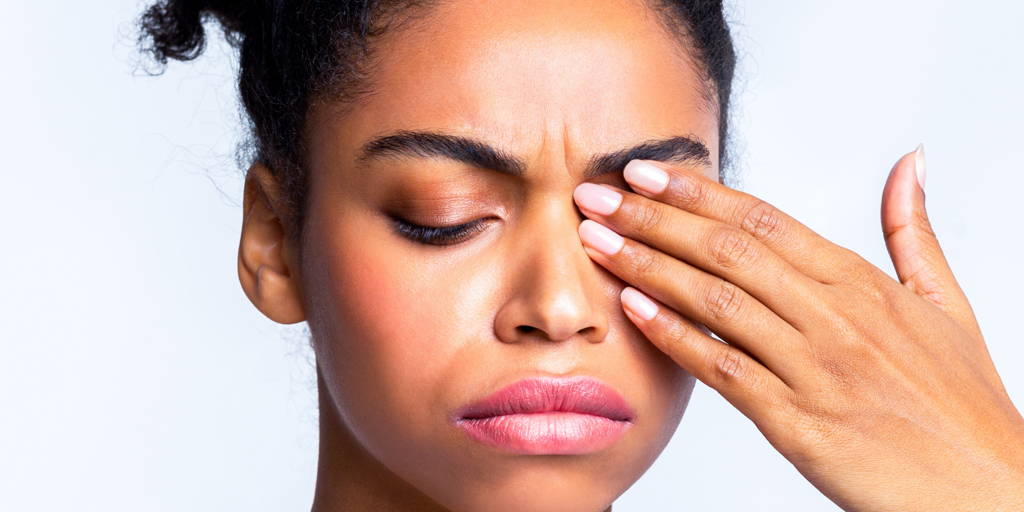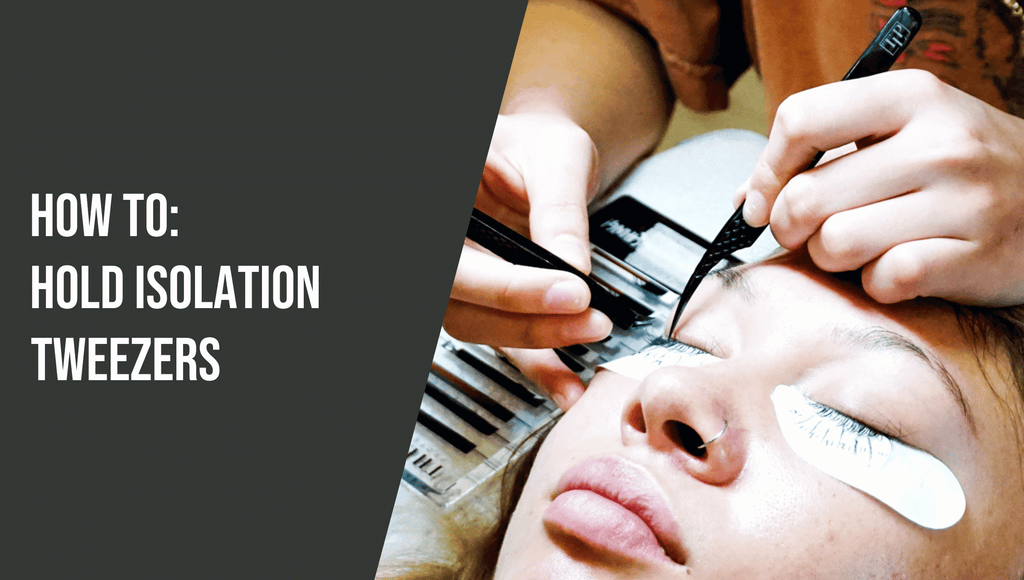Lash Education: Eye Infections
October 19, 2022 by The Lash Professional.

School is in session! Today we are going to learn about different types of eyelash extension infections and how to lower the risk of infections.
When the eye or surrounding eye area is exposed to certain bacteria or organisms, eye infections can occur. Lash education is vital: as a lash professional, you must educate your clients on the importance of hygiene to keep their beautiful eyes free of infection.
If your client displays any of the following symptoms of an eyelash extension infection, we recommend not proceeding with the service until the client has been treated by a healthcare professional, and symptoms have cleared.
However, it is up to you and your best judgment. In some cases, when the symptoms are not contagious, (such as with allergic conjunctivitis), it can be safe to proceed with written permission from a medical professional (basically, a doctor’s note).
Listed below are the most common types of eyelash extension infections you may see and their symptoms.
Lash Extension Infections
There are several common types of eye infections you might encounter with your clients. It’s important to know the difference between them and know when it’s safe to proceed with your service.
Let's briefly outline each of these lash extension infections so you can stay educated.
1. Allergic Conjunctivitis
When eyes are exposed to allergens (such as pet dander, pollen, dust, mold, etc.), they become watery, red, and itchy. This is the most commonly occurring infection among clients and can be tricky. Although allergies and allergic reactions are not contagious from one client to the next, applying lash extensions to already irritated eyes can worsen the symptoms a bit, or sometimes drastically. This eyelash extension infection is not lash extension related, but lash professionals should still be aware.
2. Blepharitis
Blepharitis is when lash follicles are red and inflamed. This is caused by bad hygiene, allergies, mites, dandruff, and certain medications. We recommend not proceeding with the service for this eyelash extension infection, as the reaction/symptoms are likely to worsen.
3. Conjunctivitis
Conjunctivitis is an eye infection that inflames the conjunctiva of the eye, causing the eye to turn pink or in some cases, red. Commonly known as Pinkeye, this contagious infection is easily spread. It can be caused by bacteria, viruses, allergies, or even lash extensions if they are not applied properly. Do not proceed with the service until the client is treated, and symptoms have fully cleared.
4. Demodex
Parasites found inside pores and hair follicles can cause infection and inflammation. These are called eye mites. Mites live inside pores and can be hard to spot or distinguish. However, if eyes are irritated or inflamed at all, it could be Demodex and we recommend not proceeding with lash extensions. The symptoms of this lash extension infection include itchy, watery, and irritated eyes.
5. Stye
A stye is a bacterial infection of the sebaceous glands, causing a red, painful bump or inflamed area of the eye. Styes can occur when the hair follicle is clogged and irritated. Although not contagious, styes require hot compresses in order to clear up. We recommend not proceeding with the service until the stye has cleared. You'll know it's gone when the lump disappears and the eye is no longer red or inflamed.
Does Your Client Have an Eyelash Extension Infection?
Keep an eye out for these symptoms in your clients:
- Excessive tearing
- Itchy eyes
- Red or pink eyes
- Crusting of the lash line
- Burning sensation
- Swelling of the eyelids
- Sensitivity to light
If you notice any of these symptoms, ask your client if they have been to another lash artist or lash tech recently. If they say yes, ask for the name and number of the lash professional so you can speak with them directly. It’s always best to get two lash professional opinions before proceeding with the service.
If your client has not been to a different lash artist recently, then it’s time to have a chat with them about their lash hygiene habits. Are they using oil-based products near their lash line? Not cleansing their lash line properly? These are all things that can lead to infection and should be avoided at all costs.
Give Clients Tips On Preventing Extension Infections
As a lash professional, you have the power to prevent lash extension infections before they start. Here are some tips you can share with your clients to help them avoid lash extension infections:
- Use a lash cleanser daily to cleanse the lash line and remove any build-up of dirt, oil, or makeup.
- Avoid using oil-based products near the lash line, as this can break down the lash adhesive and cause lash extensions to fall out.
- Be gentle when cleansing the lash line, as rubbing harshly can irritate the skin and lead to infection.
- Sleep on your back to avoid squishing your lashes and causing them to fall out.
- If you have any type of eye infection, lash extensions should be avoided until the infection has cleared.
- Visit your lash artist regularly for lash extension fills to keep your lash line looking its best.
By following these simple tips, you can help your clients avoid lash extension infections and keep their lash lines looking beautiful and healthy.
Frequently Asked Questions
Can eyelash extensions cause styes?
Technically, yes. Eyelash extensions can cause cross-contamination to happen and styes to form. This is why it is crucial to never do lash extensions on a client with a stye. You don’t want to transfer the eye infection to another client.
How do I get rid of an eye infection?
We recommend you seek help from a medical professional or eye doctor if you or your client shows signs or symptoms of an eye infection.
How do I prevent eyelash extension infections?
Prevent eyelash extension infections by keeping your tools and station disinfected at all times. Do not proceed to do lash extensions on any client who is showing signs of infection. This will protect your other clients and yourself from catching an eye infection. This is why we recommend taking all the necessary precautions to avoid any issues, such as keeping your station, kit, and tools clean at all times.
Avoid Eye Infections at Your lash Studio
It is your job to ensure that your station, tools, and hands are free from bacteria that could spread infection or disease. Remember to never apply lash extensions to clients who show any signs of these infections.
We also recommend having all new clients sign a waiver and release form to protect yourself. This form is vital to your lash business, as it is a form of insurance and can protect you from certain liabilities that could occur. It’s always better to be safe than sorry!
Eyelash Infection Prevention Checklist For Your Studio
- Disinfect your station before each lash service.
- Disinfect all lash tools before each lash service.
- Wash your hands thoroughly before each lash service.
- Never apply lash extensions to a client who is showing signs of infection.
- Have all new clients sign a waiver and release form.
By following these simple tips, you can help prevent lash extension infections in your studio and keep your clients safe and healthy.




